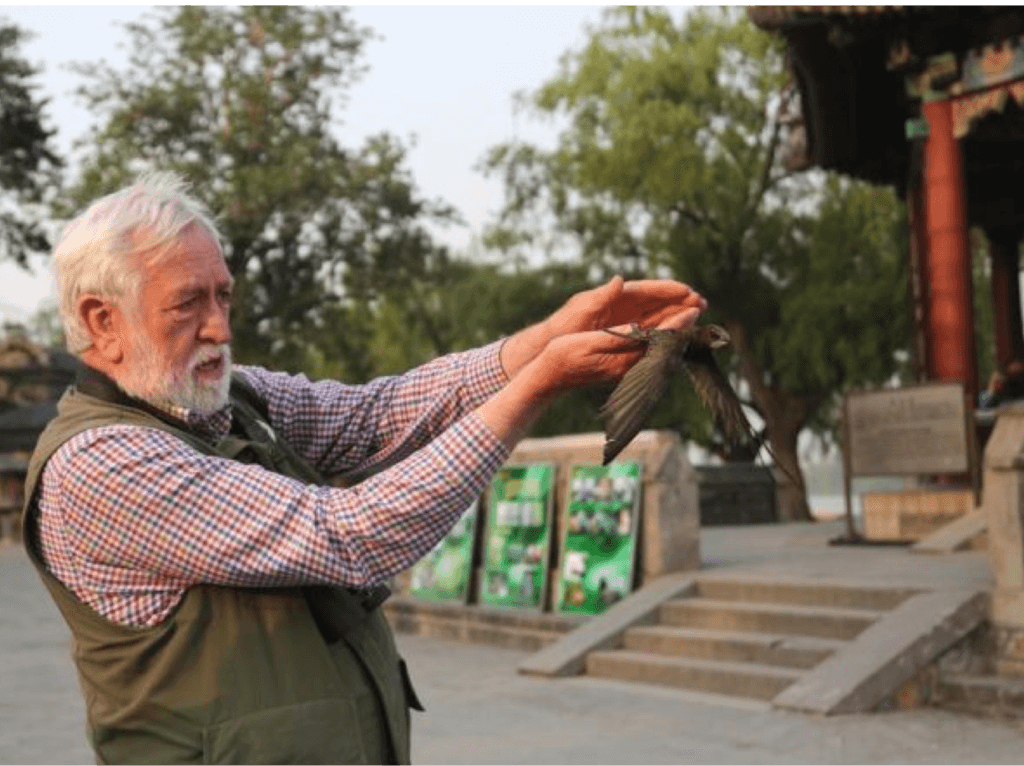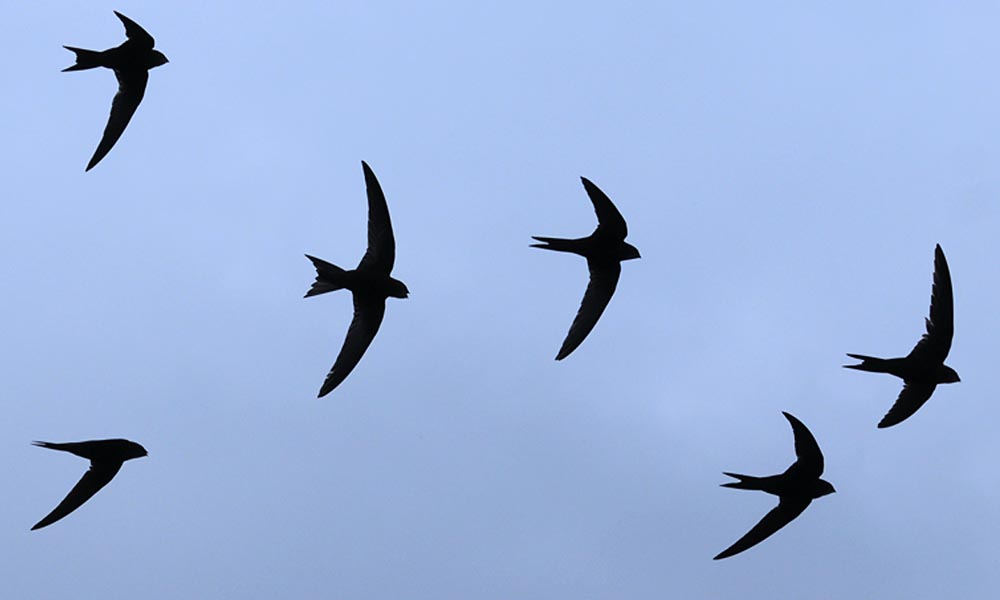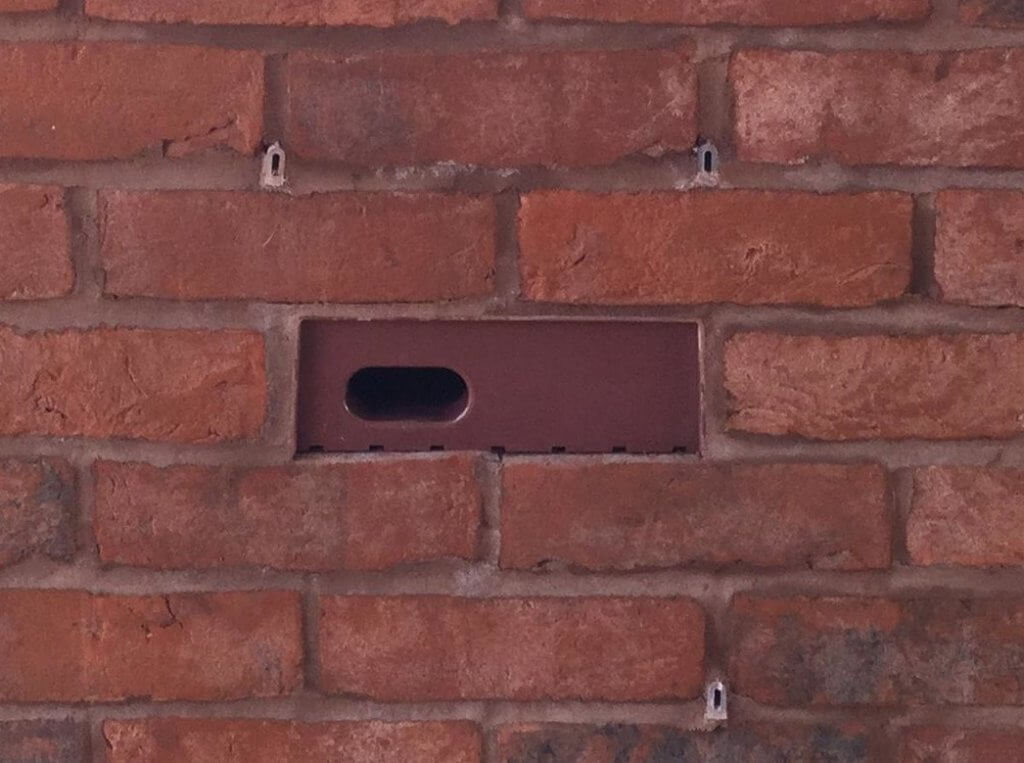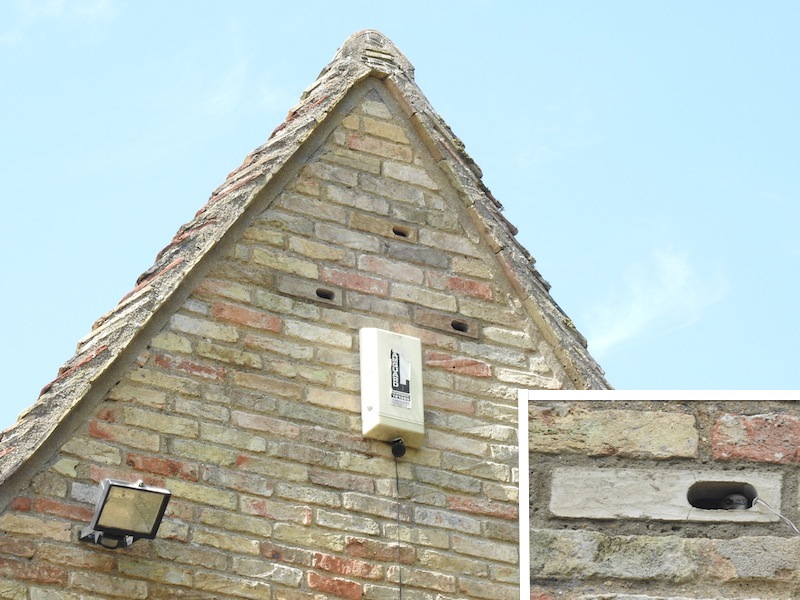

What if a Swift were a bat or a newt?
In this country all bat species and their roosts are legally protected by both domestic and international legislation, even if no bats are present. It is also illegal to obstruct access to a bat roost.
Great Crested Newts have a similar level of protection: to the animal itself, its breeding sites and resting places.
With bats and newts you could get an unlimited fine and up to 6 months in prison for each offence if you are found guilty.
Between 1995 and 2014 (19 years) Swifts in the UK declined by 47% (BTO BBS). It looks likely that they will have declined by more than 50% by 2020, satisfying the necessary criterion for red-listing. The rules say that a decline of 50% measured over 25 years is needed.
The Swift is a much loved bird, more conspicuous than any bat or newt, and it is declining at a rate which may well have had it red-listed already if an earlier start than 1994 had been made on measuring its population level.
Both House Sparrows, with a population over 5 million pairs, and Starlings, with a population over 1.5 million pairs are red-listed. The House Sparrow population has been relatively stable since 1995; both it and the Starling, which continues to decline, have data going back way before 1995.
The Swift with a population of the order of 80,000 pairs, and currently declining at a rate of about 4% per annum, is merely amber-listed.
Swifts are an extreme bird in many respects; in particular, with the exception of a few seabirds, they are one of the longest-lived of all British birds (known to 30 years). They are also amongst the most faithful to their nest sites of all British birds, returning for many years in succession to the same nest.

Despite this, the nests of this fabulous harbinger of summer have no year-round legal protection. Although all birds’ nests are protected while they are in use, it is not against the law to destroy a nest site outside the breeding season. One might imagine that the politicians fear the opening of the floodgates – if they let Swifts in, then what next? So far only the White-tailed Eagle in Scotland has been given such special protection of its nest site.
If someone obstructs the nest site of a Swift, before they return from Africa, and then the Swifts return and attempt to get in, is not that nest site in use? If the obstruction is not removed, is this not breaking the law? Such a situation might make an interesting test case.
Some power rests in the hands of planning authorities, they are obliged to protect and enhance biodiversity during the normal course of their work. They should condition the preservation of nest sites or the creation of new ones, but they rarely do, so the inexorable destruction of nest sites continues.
Ecology consultants rarely detect the presence of Swift nest sites during environmental impact assessments, particularly outside the breeding season; they should up their game.
The building industry and architects could play their part, not only in the preservation of existing nest sites, but also incorporating cavities in their new buildings, there are now low cost, easy to install products on the market.
If we do not find a way of affording Swifts’ nest sites the same level of protection as bats and newts, as well as creating many thousands of new nest sites, we will eventually lose them.

[registration_form]
The nests other raptor species such as golden eagle & osprey are protected all year round too.
On the RSPB website, it specifically mentions legal protection of White-tailed Eagle nests in Scotland, but the wording is different for Golden Eagle and Osprey.
e.g. see https://www.rspb.org.uk/birds-and-wildlife/bird-and-wildlife-guides/bird-a-z/w/whitetailedeagle/legal.aspx
That’s a great blog Dick. Swifts are such terrific birds and we need to help them. You might be interested in this document https://drive.google.com/open?id=0B3KnfKObGEGKSm1DOTlKM0ZNRUU that I wrote a few years ago now for a book called ‘A Journey Through A Birder’s Thoughts’ (available on Amazon!!!). In it I proposed including nest space for Swifts, and many other species, in all the new housing that is going up across the country. My method for the delivery of this was to make the inclusion of nesting facilities a building regulation, one swift move (pardon the pun) that would ensure this provision without it having to be battled for every time. The cost to the developers would be absolutely minimal.
Thank you Ian, I like your piece. You should have entered it for Mark’s competition!
I’m not sure I buy the received wisdom that swift declines are down to loss of nesting sites, although no doubt there may be local impacts.
Insectivorous birds have declined enormously across the piece. Hirundines are much rarer in lowland Britain and that’s been driven almost certainly by lack of insect food. We need to desl with the fact that the countryside provides little or no resources for nature.
You are almost certainly right John that fewer insects is a factor in the decline. In general, undisturbed colonies do not decline. One might expect colonies to reduce in size if the reason is something other than nest site loss. However, rapid replacement of birds that go missing from a colony may be the reason for this. Widowed birds are fairly quick finding a new mate. Thus losses due to causes other than nest site destruction would be reflected in the non-breeding population, which is what BBS includes in their statistics.
Great, thought provoking blog. Hedgehogs also spring to mind as a similar case. A few weeks ago, a smallish Hog arrived in the garden; there had been scrub clearance/ some buildling work nearby. I’m pleased to say it has taken up residence in the garden, and scoffed and grooooown! But this must happen everywhere, all the time, all year round. How do we get everyone to care enough?
For several years now I have tried to get all new buildings to have ‘Swift Bricks’ as part of the condition but you always find obstacles are put in front of you especially from MPs. My children’s book ‘Screamer the Swift – http://www.chickbooks.co.uk/screamer-the-swift was based in Bath showing the problems of nest holes when you have scheduled buildings. Food must be a worry in some areas but even when you see the Swifts rising up to the moors with fronts moving through the birds are traveling great distances to feed away from their nest sites. I have 2 boxes with no swifts but Great Tit has nested in one and both House Sparrow and Redstart have looked in. Spider hunting is another use for the boxes with especially Blue Tit enjoying the abundance.
I personally had to raise 2 swift chicks from a few days old because some idiot builder blocked up the entrance to their best on a neighbour’s house. It took 31 days but happily they made it. Had I not noticed the parents trying to get in them they would have perished. So how may others suffer incarceration due to idiot builders? I have had one other experience of this where I called the police and they made the builder leave an entrance. Its time for a protection law.
It’s a skilled job raising Swift chicks Dave – you did well. They must be fed only on insects, other diets ultimately lead to very poor outcomes, particularly faulty feather growth. Incorrectly fed birds may ultimately fledge, but they are unlikely to last long.
Yes Dick they were fed only insects. Flies, crickets, mealworms, waxworms, and locusts. All fresh and all minus a head and dipped in water for added moisture. I have photos of the day we got them and the day they flew from a cushion in my bedroom window 31 days later. Pity I can’t show you then on here 🙂
You obviously knew what you were doing David – well done! I have never reared a Swift myself, it must be most rewarding when they finally fledge.
Swifts nest under our eaves every year. I enlarged the gap and now we get them front and back. Brilliant in Summer when they just miss your head whilst screaming through the garden.
It is particularly frustrating given that swifts can be accommodated within buildings at negligible cost to the owners, developers or occupants.
Absolutely!
Great to see Swifts getting some coverage on Mark’s blog.
Dick does remarkable work (his blog is superb) as do others such as Edward Mayer (who set up Swift Conservation’s website) and people working locally. Latterly the Swift Local Network yahoo group, which allows the increasing number of local swift groups around the country to exchange information and ideas has also made a huge difference.
The RSPB now has some lottery funding for swift work and Oxford is to become the first ‘Swift City’ in the UK with perhaps more to follow. It has also established a relationship with Barrett the builders who have agreed to put ‘swift bricks’ in many of the houses on a new estate in Oxfordshire and elsewhere. We need much more of this. As Dick says, it’s cheap and simple to do, so why not?
Elsewhere, with NGO’s placing emphasis on landscape scale projects, single species work comes way down the list of priorities for funding despite the fact that many funders including the lottery are keen to support such projects and can see their potential for all sorts of spin offs, community ‘cohesion’ being just one.
As a result, the local swift groups around the UK are run almost entirely by volunteers, and despite their passion for the bird and their innovative approaches, these local projects remain seriously under-resourced. There’s so much that could be achieved with more time and money….
Unlike the work to conserve many other species, one of the main requirements of anyone wanting to see more provision for swifts is to nag, nag and nag again. Just occasionally it works….but you need to persist! And passionate volunteers are generally much better at nagging (and persisting with it) than professionals in my experience!
I’ve heard Edward Meyer speak about swifts and the environment in general, and found him a truly interesting and inspirational speaker.
Edward does a great job promoting the cause of Swifts. His website swift-conservation.org is well worth visiting.
What do house builders say?
We have had a number of successes walking onto building sites and saying “why not a few Swift boxes chaps”, showing them some pictures and examples. When they realise that it can be done at low cost, with no delay to their project, does not mess up the appearance of their buildings, nor compromise the integrity, they are usually happy to do it. Of course, having a condition slapped on any development before it starts helps the discussion!
hirundines & swifts declining in UK mainly due to insufficient ‘untidy’ , winged insect-producing understorey and /or grassy areas now on account it over-zealous clearance and /or deer browsing? Surely lack of food wouldn’t be an issue in Africa, would it-for similar clearance reasons?
hirundines & swifts declining in UK mainly due to insufficient ‘untidy’ , winged insect-producing understorey and /or grassy areas now, on account of over-zealous clearance and /or deer browsing? Surely finding food wouldn’t be a similar problem in Africa, due to similar ground vegetation clearance issues, would it?
Between 1995 and 2014, UK Sand Martins were up 22%, Swallows were up 26% and House Martins down 10%, compared to Swifts down 47%. (see https://www.bto.org/sites/default/files/bto.jncc_.rspb_breeding_bird_survey_trends_2015-uk_0.xls), so there is something different happening with Swifts, which is probably loss of nest sites. But sure, fewer insects cannot be good for Swifts.
If my memory serves me right: Swallows hunt low 1-2 m over grass, cereals after large insects; house martins higher after smaller gnats, swifts higher still include? aphids, drifting spiders or are these too late in the season.
I wonder if the creation of sand martin nest sites has helped them.
Dick – great blog, great bird and your work is conservation at its best. Thanks for your thoughts and information.
Swifts bring an all seeing, all hearing and all dancing sense of wilderness into the cityscape. How good and lucky is that? Perhaps with your techy stuff you’ll be able one day to make swifts fly backwards in time and take up their ancestral tree-hole nesting habit once more.
Or will that happen anyway if the pressure gets too great? How about nest sites in artificial dead standing trees in parks (there are some real works of art out there re mobile phone masts disguised as trees). Could not such structures help in tweaking a bit of ancient instinctive behaviour especially with piped swift calls to go with it?
Swifts still breed in trees over much of their range (including a few in Scotland). They also tend to get habituated on nest sites familiar to them, so getting them to nest in trees across the UK may take some time. There are certainly enough Great Spotted Woodpeckers around making suitable holes (after they have rotted somewhat). Nest spaces on any structure is, of course, a good idea, and attraction calls are often needed to accelerate occupancy.
Oh yes, we have it easy compared to you guys. We don’t have to build a whole chimney for just one pair of Swifts!
I’m glad here in the Netherlands Swifts do have their nesting sites protected year-round. Not that this actually protects their nests of course, but us protectors have a strong case with the law backing us up and even a government authority that can put pressure on or even give fines to people who do not co-operate. I can only hope this kind of protection comes soon for all countries where Swifts nest!
Jochem – many thanks for your comment.
Clearly, you i Holland are showing the way. Thank you for your input Jochem.